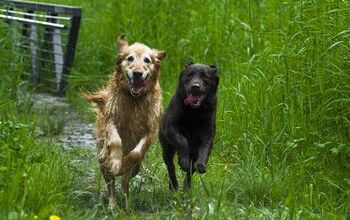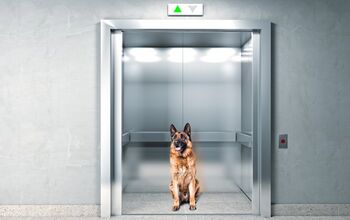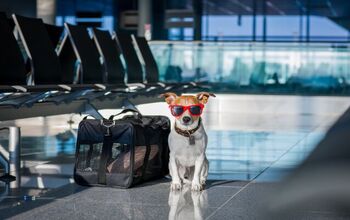How to Teach Your Dog How To Wave

Part of the reason you got a dog is so he can interact with your family and friends, right? Yet, in reality, some dogs aren’t comfortable around unfamiliar people. Perhaps your dog is genetically predisposed to being wary of strangers on the street and guests in your home. Maybe he had negative experiences with humans before you adopted him. Or maybe he wasn’t given adequate socialization earlier in life.
Regardless of the reason, your dog has a right to his own personal space. If he doesn’t want to be approached or pet by unfamiliar people, we have to respect his feelings. When we force a dog to tolerate unwelcome advances, it can backfire. If your dog feels he is pinned into a corner (whether literal or figurative) and his warnings telling people to back off are ignored, he may have no choice but to lunge or bite. Can you blame him?
Fortunately, people can interact with your dog from a comfortable distance. Teaching him to “wave” hello or goodbye is one adorable trick that serves this purpose. Your guests will get the enjoyment of interacting with your dog, while your dog will enjoy a stress-free moment performing a trick in the vicinity of new people. It’s a win-win for everyone, and can be a small step towards the larger goal of teaching your dog that new people are a source of fun, not stress.
Before teaching your dog to wave from a distance, he’ll need to learn Give Paw.
How to teach Wave
- Start with your dog facing you in a sitting position.
- Show your dog the “wave” hand signal: waving your hand back and forth (or cupped royal-family style if you prefer).
- Right after that, give your verbal cue (“paw”) and visual cue (your outstretched hand) for Paw. When your dog gives his paw, mark with “yes” or click, and then reward. Repeat this sequence until it’s smooth.
- It’s time to switch your verbal cue from “Paw” to “Wave.” Do this is two steps. First, drop the verbal cue entirely. The sequence is now: give the new hand signal (waving), give the old hand signal (holding out your hand). When he gives his paw, mark and reward. Practice until it’s smooth.
- Now, add the new verbal cue, which is “Wave.” First say “Wave,” show the new hand signal (waving), show the old hand signal (holding out your hand). When he gives his paw, mark and reward. Practice until it’s smooth.
- You’re ready to fade the old “paw” hand signal. You will follow the same sequence as before, but before his paw touches your outstretched hand, you’ll pull your hand back. This is how your dog will make the waving motion. (You may have to do this in several steps, by presenting your outstretched “paw” hand for a shorter and shorter time.)
- From there, very gradually distance yourself from your dog.
- Ultimately you’ll be able to cue it from a distance. This means your guests can cue it, too, without having to get close to your dog. If you plan to reward with food, either instruct your guests to toss the treat (not hand feed), or you can reward from your hand.
It may take some time before your pup can get all the way to the final step, as it includes distance from the person cuing Wave, plus the distraction of people in the vicinity. The trick to having a successful Wave is taking your time and enjoying the process of training. By having fun along the way, your dog will learn to love this trick as much as your guests will.

Kate Naito, CPDT-KA, is a dog trainer at Doggie Academy in Brooklyn, NY, and author of the training book, "BKLN Manners." She draws upon her experience as an educator and dog trainer to apply positive training techniques to a challenging urban environment. Kate is a rescue advocate drawn to special-needs dogs and currently has two Chihuahua mixes, Batman and Beans.
More by Kate Naito























